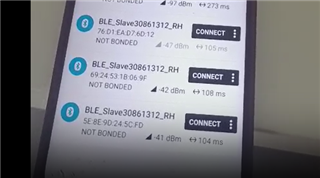Tool/software:
Dears,
1. A customer tested multiple CC2345R5 devices and found a problem. When multiple CC2345R5s are turned on at the same time, they will occupy the same 2.4G Bluetooth channel, causing the communication between the host and the Bluetooth slave to fail.
2. Is it possible to set up the CC2340R5 SDK to detect whether the 2.4G channel is occupied when Bluetooth is turned on, and automatically switch to other channels if it is occupied?


